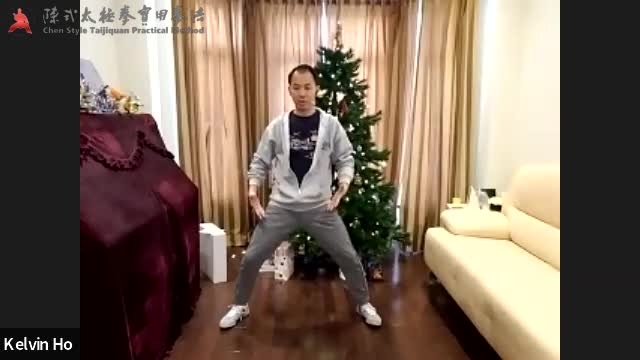
Presenter: Kelvin Ho Length: 55 mins Difficulty: 3/5 Language: English
Year: 2022 Location: Toronto, Canada
This lesson covered: 2. Block Touching the Coat (Lan Ca Yi) We also disussed: Taiji Trinity
If you like this video, there is an even greater value in purchasing one of the packages below.
Purchase 2022 Full Year Online Class Video Package
Purchase 2022 Kelvin Ho Yilu Instructional Class Video Package
NOTE:
- Video packages are designed for the convenience of students.
- Some packages are in fact classifications of videos.
- Some videos in packages might have been published and purchased by you individually.
- Average prices of videos in packages are considerably lower than individual videos. The number of videos in the package will increase until the sum of all individual video prices equal to two times or more of the package price.
- In view of this, if you have purchased a video that are also included in a package your have purchased, or vice versa, we will not give refunds or equivalents.
- All videos in packages are paid videos. They are restricted to your personal viewing and other usage. You do not have copyright of the videos and therefore you do not have permission to give/share with others.
- Please note that as a customer/user of the website and/or student of Chen Zhonghua, you have given him and the companies/organizations he represents permission to use videos or photos with you, both personally and commercially.
- Making a paid purchase constitutes agreement to the above terms.
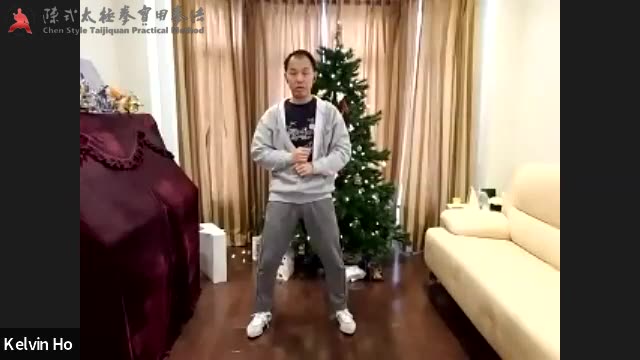
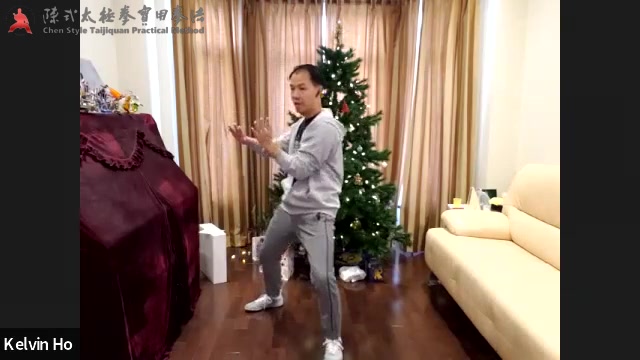
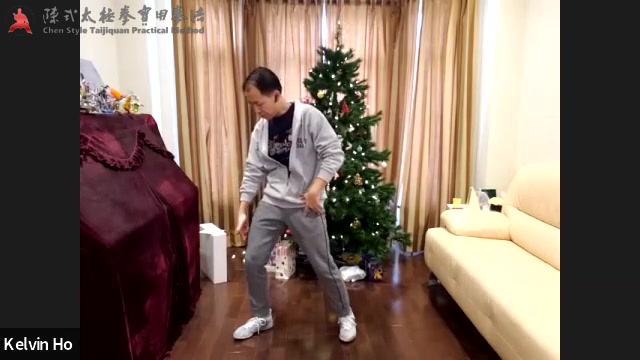


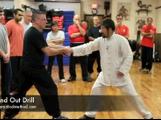
{ 1 comment… read it below or add one }
*** Personal notes on the video instructions ***
– All Pinyin is written in full capitals, with tone indicated as a number following it (easier to lookup if you want the corresponding character later).
– The notes below are a reflection of the notes I take during class, shared here to incentivize people to watch the video, and do not in any way constitute a replacement for it.
– I think there are quite a few golden nuggets of information in this video. See, for example, explanations at the times:
– 11:30 – shovel step
– 16:55 – feeling in count 6 of Pound Mortar
Acronyms used in the notes:
– LF = Left foot
– RF = Right foot
– LN = Left Knee
– RN = Right Knee
– LL = Left Leg
– RL = Right Leg
– LK = Left KUA4
– RK = Right KUA4
– LH = Left Hand
– RH = Right Hand
– LE = Left Elbow
– RE = Right Elbow
– LS = Left Shoulder
– RS = Right Shoulder
– LA = Left Arm
– RA = Right Arm
– CL = Chest centre line
– TH = Top of the head
– PC = Positive circle
– NC = Negative circle
– DT = DAN1 TIAN2
– CB = Shovel Out / Shovel Step (CHAN3 BU4)
– XMB = Small horse stance (XIAO3 MA3 BU4)
– ZMB = Left horse stance (ZUO3 MA3 BU4)
– YMB = Right horse stance (YOU4 MA3 BU4)
1. First move of YI1 LU4 recap
– Shoulder width for the two feet
– It’s ok to keep it at a wider stance to fix you but not too large, so you can’t move
– Raise hands while keeping the body at the same position (no popping the body up)
– Catch opponent’s arm, causing a BIE2
– Add the turn without moving central axis
– Open foot at 45 degrees
– Turn like a revolving door, tossing is a common mistake
– LH middle finger points at the same point (DIAN3) in space throughout the entire movements
– LE needs to cross over the CL (may require lowering body)
– Default count for movement is 7 (original)
1. Raise hands
2. Turn
3. (Inner) Pull LF
4. CB with toes up
5. Transfer weight
6. (Inner) Pull RF + RA
7. Land in XMB
– Not counted – the RA extension
– Alternative count for movement (based on application):
1. Raise hands
2. Turn
3. (Inner) Pull LF
4. CB with toes up
5. Transfer weight
6. Stretch RA
7. (Inner) Pull RF + RA
8. Land in XMB
– When doing the pull steps above, remember to not move the support leg
– Typical compensation for improper form: sticking bum out
– Proper form requires flat back
– Remember, CB is like digging out a trench with the front foot, but all weight is in the back leg
– Toes should try to point back to the head
– As soon as the front foot lands, the knee stops at the top of the ankle.
– This is a single movement
– GOLDEN NUGGET: to do CB, lock the back knee, push forward to shift the weight.
– The push is actually more like a hip flexor/hip abductor stretch (watch the video at 11:30 for a better view of where the stretch is felt).
– This is important as an exercise for opening the KUA4
– RA stretch (Count 6 of alternate movement count)
– Not moving the arms themselves
– Lock LK and open the RK
– Squeeze (with shoulders?) RH and LE out
– Create two stretches
– Between RH-RF (vertical plane)
– Between RH-LE (horizontal plane)
– Power is given by one or more stretches
– Hands are in the track, squeeze hands in track
– Count 6 requires opening feet to side and stretching before locking the the entire LL
– Don’t push up, don’t move LN
– GOLDEN NUGGET: At 16:55 there is a description of how it feels when you’re pulling the feet forward
– Pull needs a lot of lower/side core muscle stabilization.
– Always stretch the wrist joint open and hold it for the tile hand
– Count 7:
– Upper body doesn’t move
– Pull RN to RE but RE is fixed, don’t bring it down to meet the knee
– LK pushes into LF (heel)
– RH is a NC
– Both elbows are tucked in
– Keep tight with no slack
2. Second move of YI1 LU4 (Block Touching Coat – LZY)
– Count of the movement:
1. Extend hands
2. Pivot and tilt up
3. Five stretches
4. RE in
5. Shift weight
6. RH out
– Count 1
– Stretch fingers of both hands slightly to left, pointing downward
– Imagine someone is pressing down at wrists
– Can’t just open hands diagonally
– Wrists are like pivots
– There’s more than 1 way to do it
– The important thing is to keep a pivot in the body, especially under pressure.
– Sink RS to tilt RH up
– Count 2
– To open up, don’t just extend hand
– Think PC: first need to have RE in to then do RH out
– RE gets to in the CL, to be in the inside
– RH is PC elbow in, LH is NC hand out
– LH is bent at wrist
– Count 3
– Hand out is done by opening the chest
– Don’t move the hand
– Imagine there is pressure on the RA (forearm)
– Remember to use indirect power (hence the chest)
– Open KUA4 ⇾ Open chest (see 27:30)
– The opening comes from the inside
– No tossing the central axis!
– Count 4:
– All pretty much at the same time:
– RA does PC: Elbow in (squeeze into middle)
– LA does NC: Elbow in (so remember it comes from top)
– CB with RF: RE squeezes DT, DT squeezes RF
– Count 5 (sometimes omitted):
– RK-LK stretch to shift weight (see golden nugget for CB, same kind of stretch)
– Stopping the foot upon landing
– Emphasis on not overstepping the knee, maintaining the angle
– Count 6:
– RH out, LF on tummy
3. Theory/Principles:
– “What is outside, stays outside. What is inside, stays inside.”
– Outside: 5 points – Hands, Feet, Head
– Always stretch in 5 directions outwards, want to go away from the body (even feet) – “Five points going out”
– Inside: everything else (including elbows!!)
– Pulled into DT
– Net result of these forces: always maintain a stretch
– Example: hand should not follow elbow in, it should want to go out (and hence produce a stretch in the forearm and wrist)
– Like a tug of war, one side wins by a little and that causes the move.
– Watch the video to see the different when there is a pull/stretch around 34:30 (very clear difference).
– This is Hong’s 10 word principle:
– “In with elbow, no hand. Out with hand, no elbow.”
– Principle: Separation of YIN1 and YANG2
– Encapsulates everything we do
– Concept: Indirect power
– Idea of what is created by the principle
– Action: “In with elbow, no hand. Out with hand, no elbow.”
– Integrity of structure is important to create indirect power (otherwise one cannot create a lever, and lever is key to indirect power)
– Bulldozing opponent is no TAI4JI2
– you should match the force, then add another force (ideally in an orthogonal plane) on top of it.
– If the opponent is good, they will match on the other force dimension and both get stuck
– Then to resolve the stalemate you need to add a force
– The first who can’t match the force loses
– Same thing we can do with “In with elbow, no hand. Out with hand, no elbow.” the rest of the body should do it too:
– e.g. head needs to go out, shoulders wants to go in
– e.g. foot needs to go out, knee wants to go in
– These are one of the HE2: like a tight rope that is tucking you to the DT
– SLOWLY INCREASE THE NUMBER OF YI1LU4’s YOU’RE DOING TO 20 A DAY
– Path towards 20 a day:
– In the beginning you are not physically able, it needs to be a goal
– Try to spread it out throughout the day, specially in the beginning (lack of resistance for example)
– In the very beginning goal should be to do 20, not do 20 perfectly
– Can’t do it all at the same intensity either
– Often corrections slow it down (you want to spend more time in the movement you’re getting better)
– Focus on one area of improvement
– Not doing enough leads to poor habits and not enough change in the body (so you’re not really progressing much)
4. Personal reflections:
– Count 6 of Pound mortar:
– The lower the stance, the mode demanding it feels to conform to the requirements.
– Probably it is a good idea to start with a stance that is as low as possible, but I’m still able to do the movement correctly
– Point of almost breaking down is probably higher than you would like to admit.
– Way too low: you fall down as you cannot cope with the movement requirements (e.g. not moving knee).
– Way too high: do not feel the crunching of Kelvin’s explanation at 16:55.
– Count 1 of Block touching coat:
– Stretches out hands, sometimes looks as if it produces a corkscrew motion side effect on the hands.
– Wonder if this is intentional/helpful to in applications if someone is grabbing your wrists, but maybe it’s nothing.
– More than one way to do the pivoting, but I suppose in the beginning it’s best to just try to do it as close to how Kelvin is doing as possible.
– 20 YI1LU4’s a day:
– I’m over-optimizing. I should not worry so much about trying to do everything for a move right before progressing to the next one. Should prioritize/speed up copying the entire form and match Kelvin’s advice.